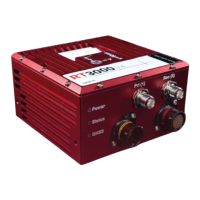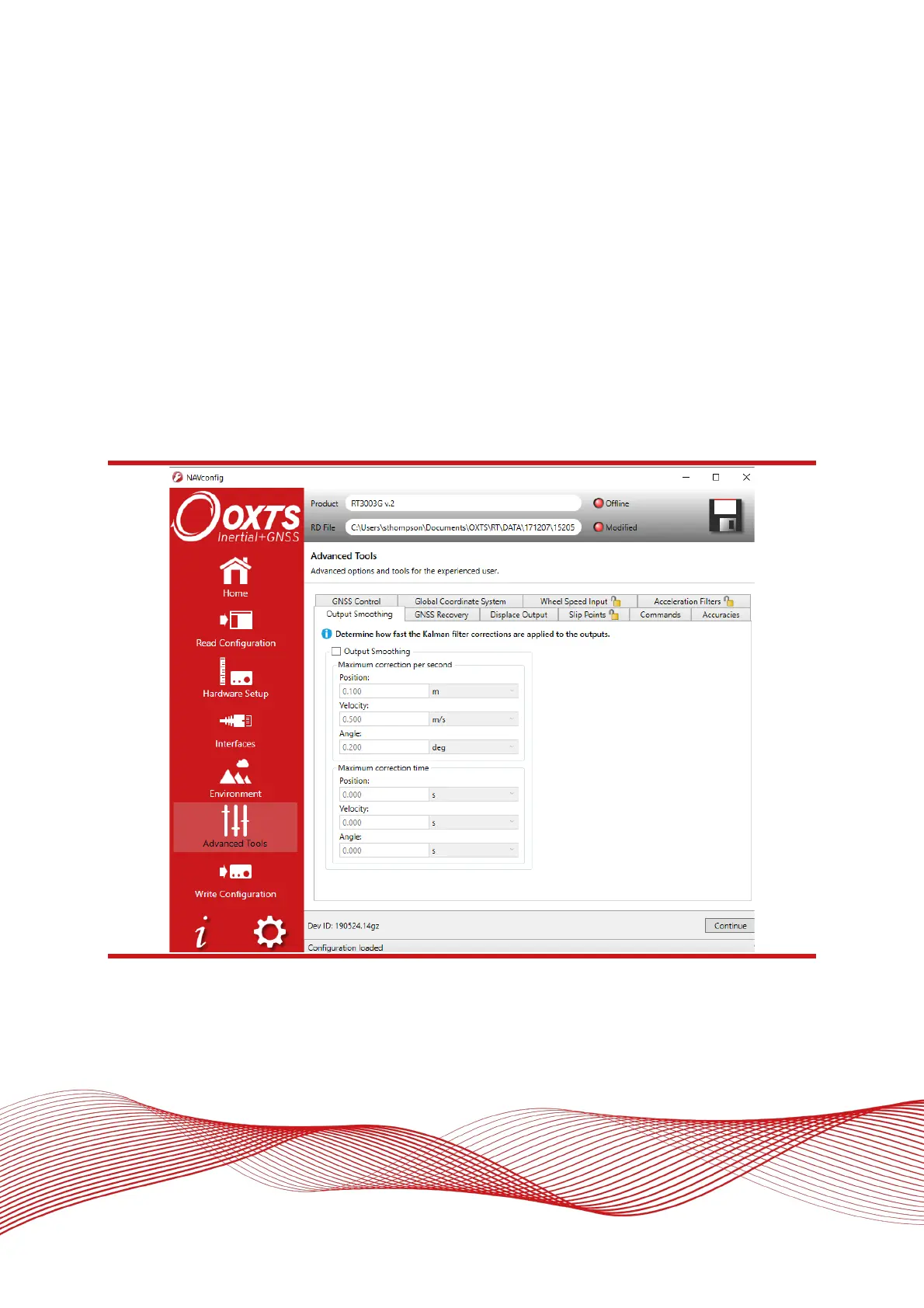Oxford Technical Solutions Ltd Page 76 of 110
The wheel speed corrections will not be as effective in reducing the drift of the RT if the wheel speed is
measuring two wheels (i.e. after a differential), since the actual position of the wheel is required for accurate
navigation. If a post-differential encoder must be used then the accuracy cannot be guaranteed.
For best results, a front wheel drive vehicle should be used with the wheel speed on a rear wheel. The wheel
speed pulses from driven wheels are less accurate.
Output smoothing tab
When the Kalman filter in the RT determines that there is some error to correct, this error is applied smoothly
rather than as a jump. The output smoothing controls how fast the correction is applied to the outputs. This
option is particularly useful for autonomous vehicles or path-following robots as a rapid change in position can
lead to a large change in the steering angle.
Figure 39 shows the Output smoothing tab in the Advanced Tools section within NAVconfig. Click the checkbox
to enable output smoothing and unlock the properties for editing.
Figure 39: NAVconfig output smoothing properties window
The smoothing of the position, velocity and orientation corrections can be controlled independently. Enter the
maximum correction that can be applied every second. For example, if 0.1 m is entered for the position
smoothing then the RT will only correct a position error by a maximum rate of 0.1 m/s.

